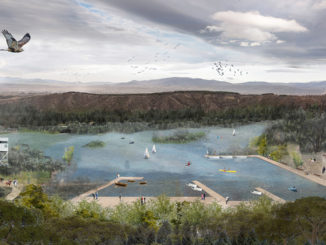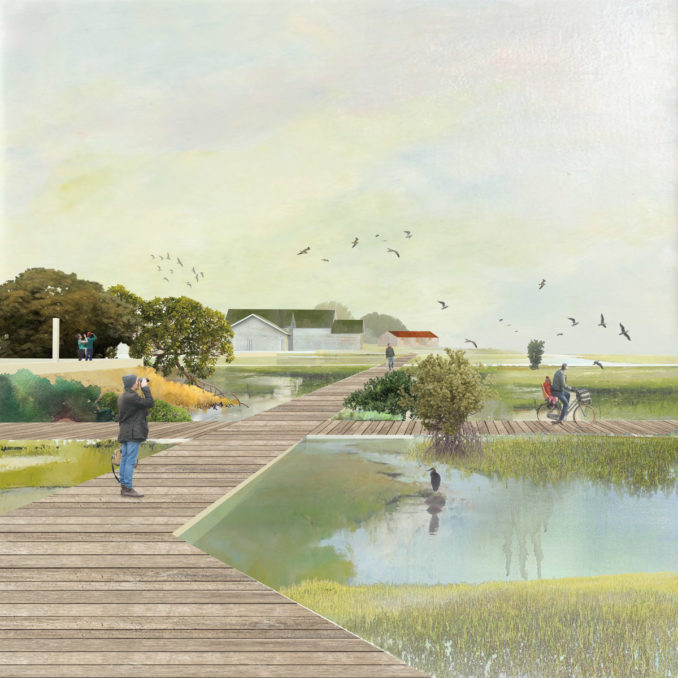
Right to Remain: Adaptability of staying under rising water and eco-migration
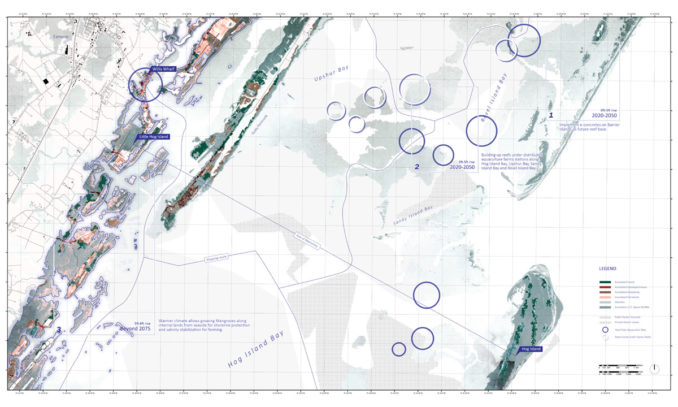
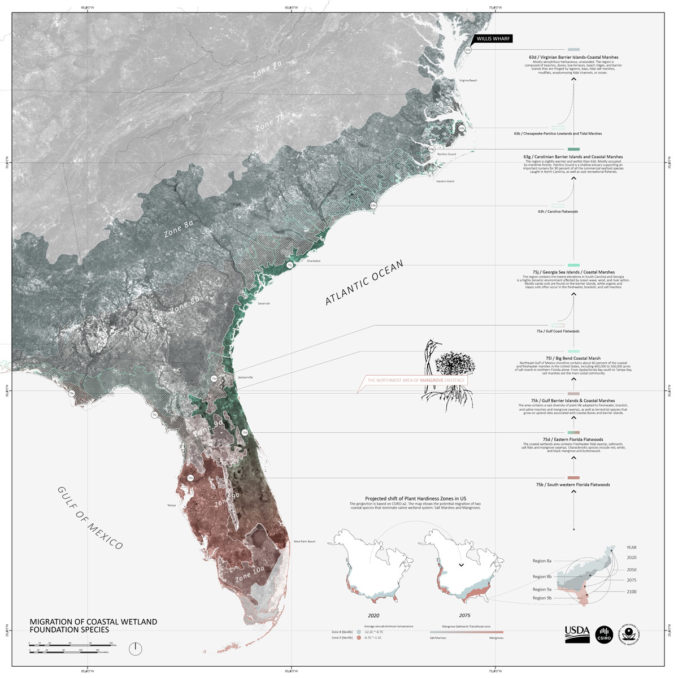
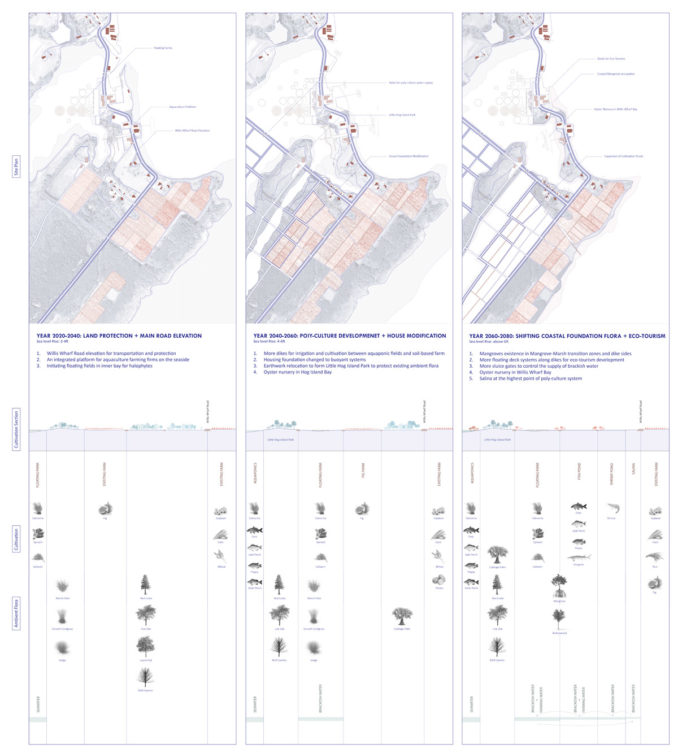
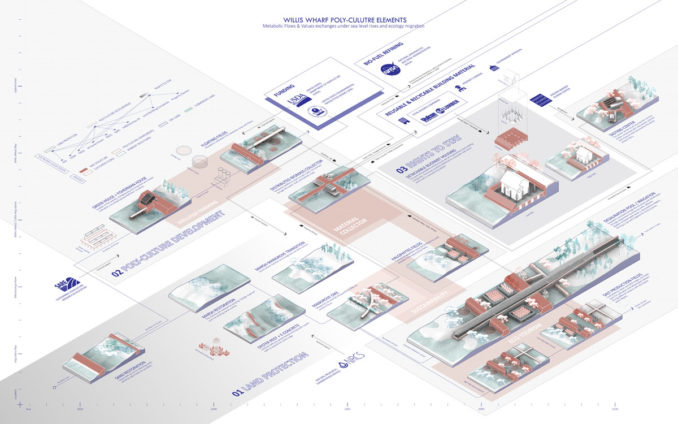
The project reimagines Willis Wharf in Little Hog Island, on the seaside of Virginia Peninsula, some 60 years in the future: thick forests of mangroves suppress wave action, with additional help from a dyke, elevated buildings, and residents who have transitioned from land-based agriculture to aquaculture.
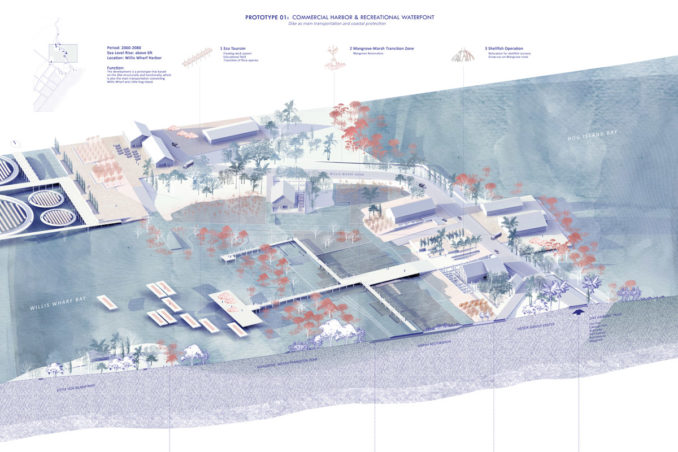
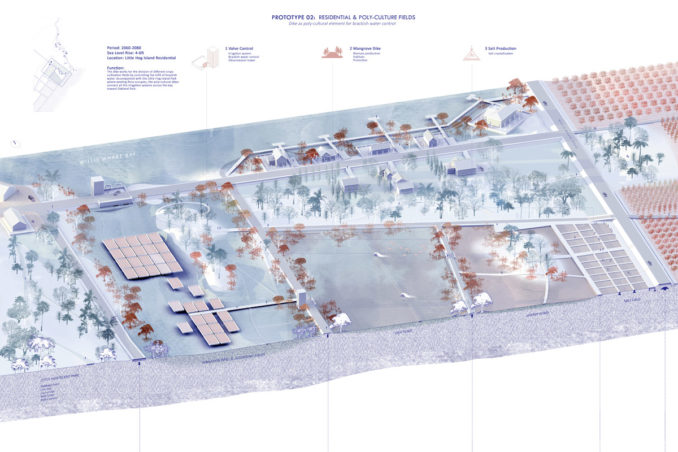
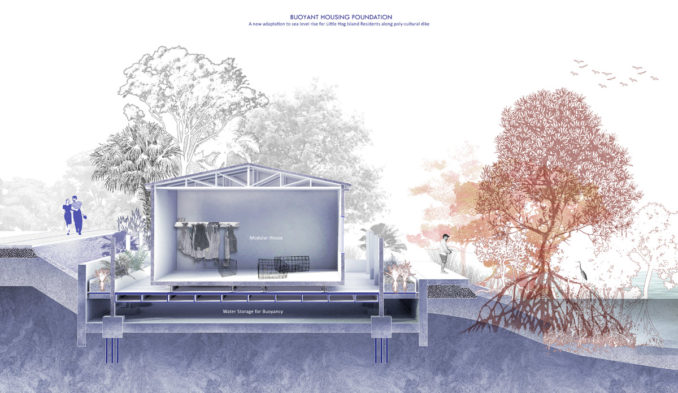
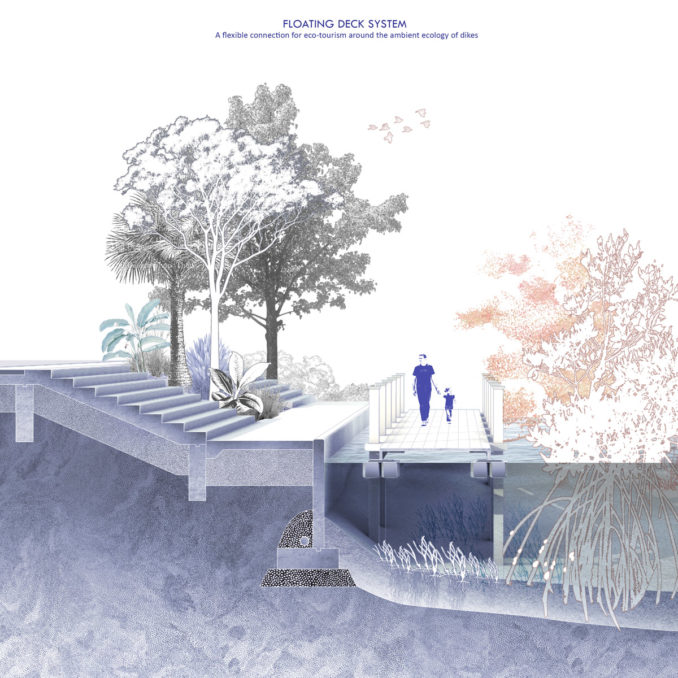
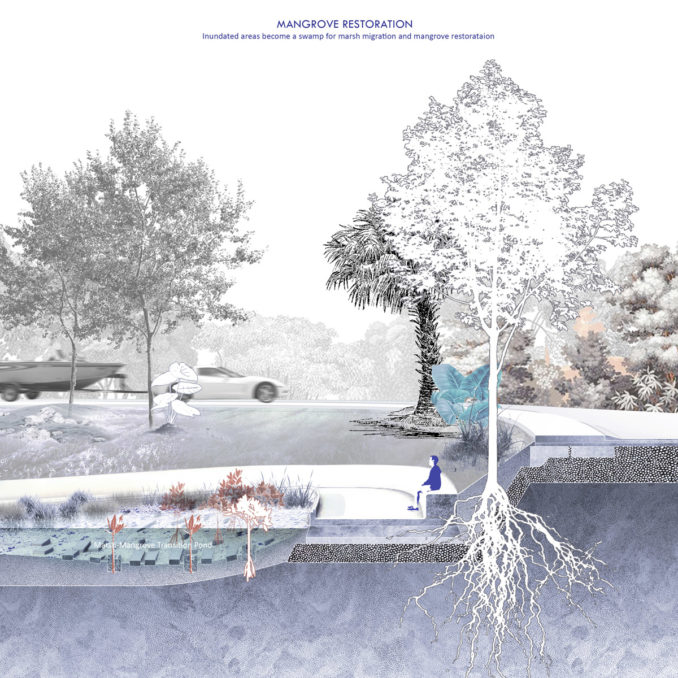
Shrinking terrestrial areas and weak productive efficiency harness the necessaries for people to develop from mono-aquaculture to poly-culture at Willis Wharf. At the same time, traditional housing modification like lifting or relocating structure is no longer an absolute way to deal with sea-level rise. They own the right to remain on their lands due to heavy reliance on aquaculture. In case, I summarize the plant species biotic succession provided by EPA and USCA, and propose a new type of poly-culture the living scenario that could co-exist with the mangroves in 40 years with rising water level and temperature. In this proposal, the dynamic changes of water and plant species become a sustainable support to help people remain in their places on Little Hog Island. According to the chart of species growing seasons and environmental tolerance, 4 different flora and fauna species are selected as symbolic crops involving the poly-culture throughout Little Hog Island.
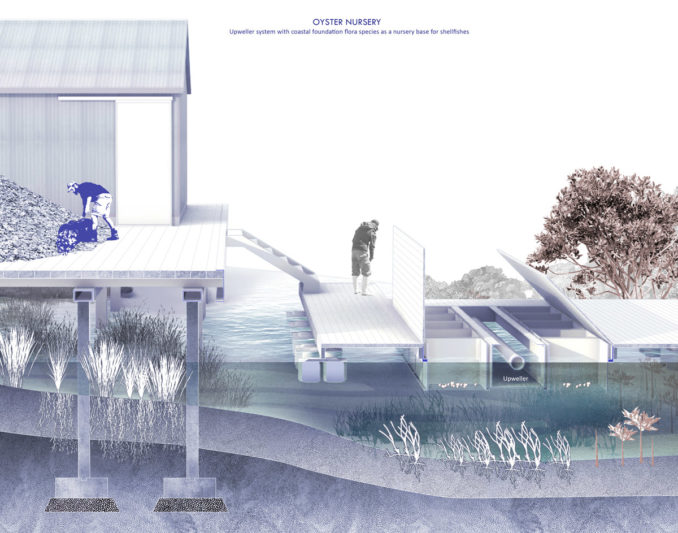
The dike is the main element that constructs the whole system, which is not only for agricultural uses but also an infrastructure that fosters cultural identity through productive ecologies. There will be three actions that reinforce the right to remain on land: Land protection, Poly-culture development and House Modification. As a preparation for the implementation, more oyster reefs are placed in Hog Island Bay to reduce wave energy which might hamper the mangrove’s growth. Willis Wharf Road is slightly raised as a dike for transportation and protection. The intrusion of brackish water brings more expansion of poly-culture dike and aquaponic ponds, and the amounts of valve that control the saltwater intrusion gain gradually. As the brackish intrudes more, it happens to trigger a series of migration and replacement of crops in Hog Island. In 2060, succession and daily tide dynamics are on display at littoral cultivated ponds, while salt fields beside the dike detain and evaporate seawater, creating dynamic salt spa and gathering place for visitors and residents. There are two prototypes that picture the changing process: Commercial Harbor + Recreational Waterfront, Residential + Farming fields.
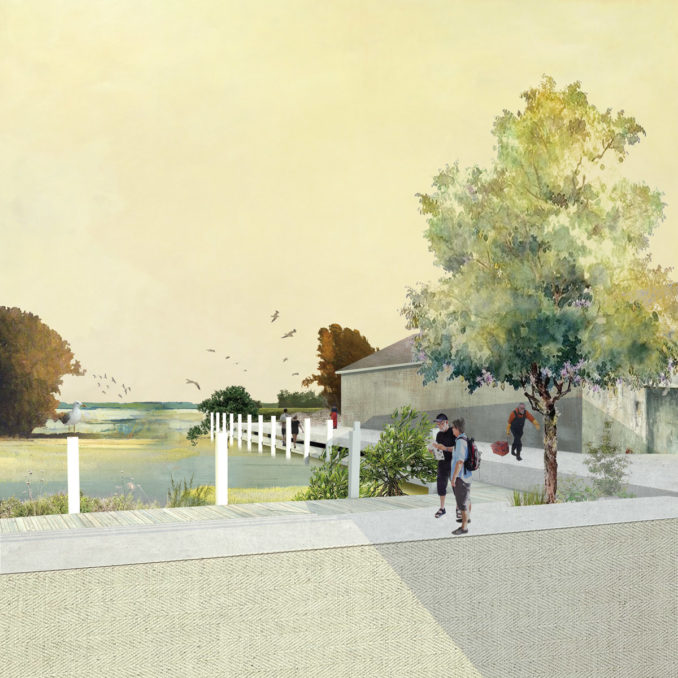
Right to Remain
Site: Willis Wharf (Little Hog Island), VA 4. Designer: Tina (Yun Ting) Tsai
Student: Tina Yun Ting Tsai
School: Harvard Graduate School of Design
Instructor: Gary Hilderbrand
Text & Image Credits: Tina Yun Ting Tsai

